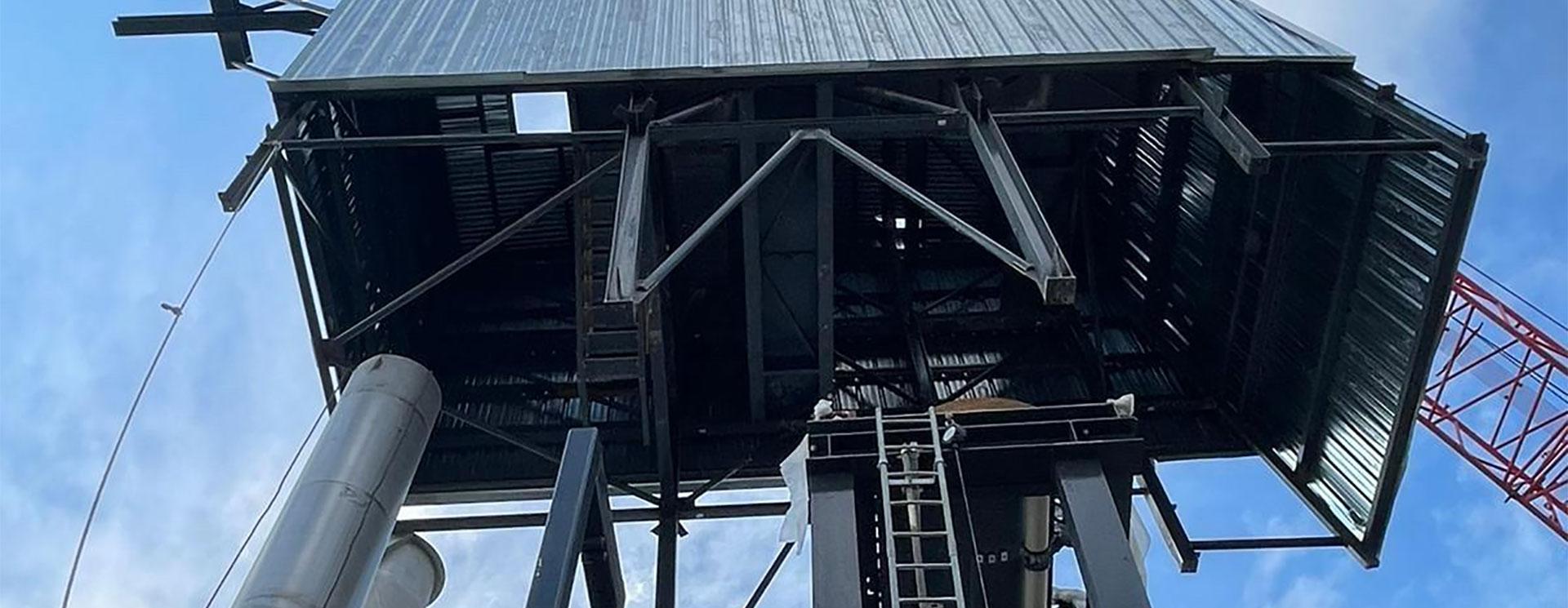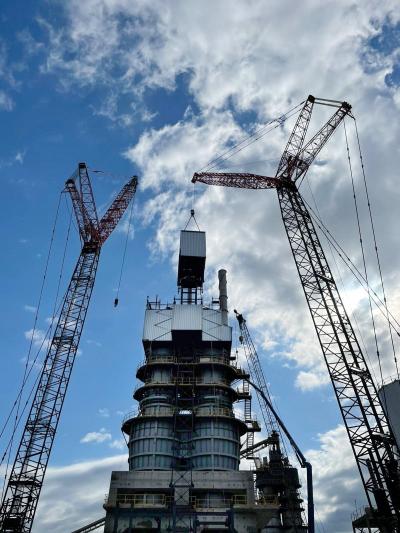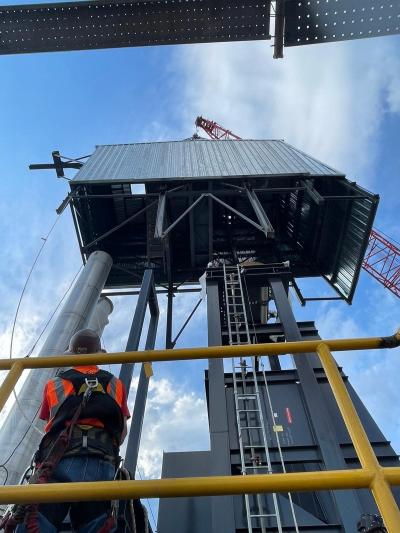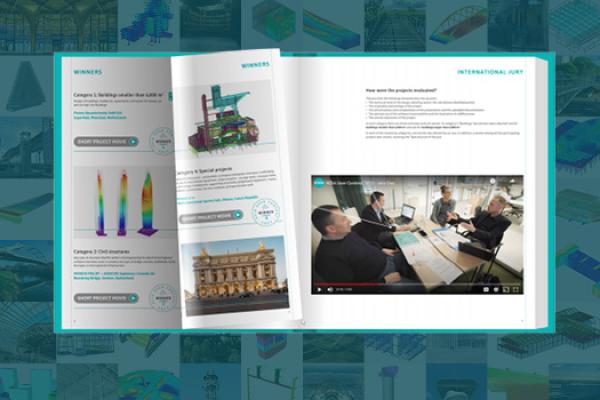
Details of Lime kiln superstructure
- Country United States
-
Software
- SCIA Engineer
- Construction date 31/05/2021

Structural engineer: Ing. Jan Blažík, Havířov, Czech Republic
Contractor: Lhoist North America
Kiln location: Marble Falls, Texas, US
This project deals with the installation of a twin-shaft lime kiln superstructure. The extension itself is assembled “on the ground” and is then lifted and installed on the top of the kiln by cranes.
Originally, the whole kiln superstructure was supposed to be installed in one step. However, at the last moment, the plans were changed and it was decided to split the superstructure into 2 parts and install them one by one. As the analysis and checks for lifting the whole superstructure had been already completed, the project had to be calculated again.
1 – bottom part
2 – top part
The lime kiln superstructure itself is a standardised structure. Nevertheless, its design does not take into account lifting of the assembled structure, notwithstanding lifting in parts. The internal forces in individual sections of the load bearing structure are redistributed during the lifting process and the stresses are different from the stresses under a standard operation. Therefore, it was necessary to locate the most stressed elements and joints and adapt their design for the lifting phase.
3D models of both superstructure parts were created from the production documentation and drawings. The documentation provided by the contractor was partly in English and partly in Spanish, so it was quite challenging to search several dozens of drawings for all the elements and details.

Analysis models of both parts were prepared in SCIA Engineer and submitted to the SCIA technical support team that used a special application to determine centres of gravity for self-weight and for permanent loads. The permanent load included plate flooring, cross bars, roof and wall panels, railing, staircase and installed technology. A proper determination of the centre of gravity was crucial for proper positioning of lifting rings. In the next step, the two models were converted to SCIA Engineer and checked according to the ANSI/AISC 360-16 code using the LFRD method (Load Resistance Factor Design).
Connections were modelled and analysed in IDEA StatiCa software, again according to the ANSI/AISC 360-16 code using the LFRD method. In several places, the load bearing elements had to be reinforced with stiffeners, namely in the location of the lifting rings. These additional stiffeners were made of ASTM A36 steel, available in the US.
For the bottom part of the superstructure, standardised lifting rings made of ASTM A992 steel with the lifting capacity of 55 tons were used. These rings are tested for double capacity, but were used as they had been originally planned for lifting of the whole superstructure in one step and had been already delivered to the construction site.
It was not manageable to obtain in due time standardised lifting rings with the capacity of 12.5 tons for the top part of the structure. It was therefore decided that the rings will be made of high strength ASTM A992 steel by a local provider. Therefore, this project includes also the analysis and design of lifting rings with the lifting capacity of 13 tons. The checks were carried out for double capacity.
The author of the project would like to thank specialists from Prerov Assembly Inc. for assistance and consultations during the works on the project, namely to Ing. Pavel Zbožínek and Ing. Jaroslav Jirut, and also to Ing. Radim Matela, the head of SCIA CZ support team.
SCIA has been organising user contests for years in which all kinds of projects can participate.
Curious about our last contest?
New: Now stacked with many embedded project and testimonial videos
